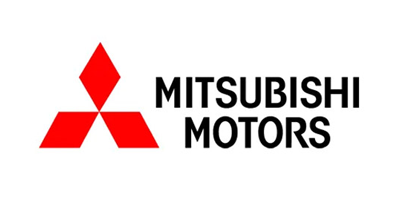

Artillery Systems Warfare Market by Caliber (Small, Medium, Heavy), Type (Mortar, Anti-air, Rocket, Howitzer), Component (Fire Control System, Ammunition Handling System, Gun Turret, Engine, Chassis, Auxiliary System), Range(Short Range (5-30 Kilometer), Medium Range (31-60 Kilometer), and Long Range (>60 Kilometer)) and Region (North America, Europe, Asia-Pacific, and Rest of the World) - Market Size, Share, Trend, Forecast, Competitive Analysis, and Future Outlook: 2022-2028
Base Year: 2021
Historical Data: 2016-2020
Market Highlights
The Global Artillery Systems market is projected to develop at a compound annual growth rate (CAGR) of 7.4% from 2022 to 2028, reaching US$ 9.2 billion in 2028 from its estimated size of US$ 3.8 billion in 2021.
Artilleries are military artillery with a great range and a purpose of firing projectiles. These are typically used in military operations and missions that traverse international borders. The widespread application of artillery systems in military domains has led to their evolution in the global market. The market for artillery systems is being driven by an increase in concern over military operations and the safety of military personnel. The market's great advantage and quick rate of development have allowed it to demonstrate its value in recent years. The Artillery Systems Market Trends are driven by violent acts, national wars, and terrorist attacks. Because military personnel are the reason for the nation's tranquility, the globe is likewise concerned about their safety. Consequently, the growing awareness of military protection by the government and defense ministries is driving the expansion of the artillery systems market.
The market for artillery systems is driven by the growing need from the defense industry for improved military hardware to fend off enemy attacks. The primary rivals in the market are even making an effort to enhance their offerings by enhancing the capabilities of artillery systems to provide the defense industry with necessary features. The participants' main goal is to come up with innovative ways to improve artillery systems so that soldiers can target their attacks more precisely. These are very effective military equipment that perform admirably in the field.
Moreover, the market outlook for artillery systems is mainly supported by increasing government sector investments linked to defense institutions. The growing need from governments throughout the globe to protect their armed forces and maintain international peace will cause the artillery systems market to grow quickly in the coming years.
The COVID-19 pandemic and its multiple waves are expected to have a worldwide effect on the finances of numerous nations in 2020, despite a rise in global defense spending. This could discourage market development by forcing governments to reduce defense spending throughout the course of the projection period. In 2020, the pandemic's impact was also seen in the manufacture of artillery systems at a number of factories. The greater military budget of emerging nations enables them to make investments in the creation of cutting-edge artillery systems. It is anticipated that the introduction of weapon modernization programs to construct sophisticated artillery would increase the usage of more recent artillery, enhancing market prospects in the next years.
Recent years have seen a number of directives and investments in the sector that should expand the market as a whole. Among them are: • The amount spent on the military worldwide in 2020 was USD $3081 billion, up 3.1% from 2019. In 2020, military spending will have increased by 9.3% over 2011 due to stronger growth in previous years. The countries with the highest global military spending in 2020 were the United States, China, India, Russia, and the United Kingdom, according to SIPRI (Stockholm International Peace Research Institute). These countries made up 62% of global expenditure.
Market Segment Analysis
Based on type, the market is divided into three segments: rocket artillery, howitzers, and mortars. With the majority of the Artillery Systems Market Share, the mortar category is the most significant among these industries. Mobility is enhanced due to the small size and lightweight nature of the product. The mortar industry is growing as a result of these traits. The howitzer segment is expected to grow quickly due to the growing employment of towed and self-propelled howitzers in the global military sector.
The gun turret, fire control, ammunition management, and auxiliary systems market segments comprise the artillery systems market. Among all sectors, the fire control system segment is anticipated to hold the largest market share. In the meantime, the munitions handling system is anticipated to have the highest CAGR over the evaluation period. These fields are expanding explosively as a result of the growing need for better firing systems and accurate target recognition.
There are three range categories in the artillery systems market: short-range, medium-range, and long-range. The medium-range category makes up the majority of the artillery systems market since medium-range artillery is widely used in military applications. The long-term compound annual growth rate is expected to be the highest due to the global increase in border disputes.
North America is projected to continue to dominate the Artillery Systems market in terms of regions for the duration of the forecast period. The United States, which is the largest military spending nation in the world, has a considerable number of the most advanced defense equipment, which has led to an increase in demand for better protection solutions in the defense and military sectors. This has also contributed significantly to the expansion of the market in North America. The European market is thought to be the second-largest share-holding market, behind North America, as a result of the rise in terror attacks. Market expansion is encouraged by European nations including Germany, France, Russia, and the United Kingdom.
Simultaneously, the Asia Pacific Artillery Systems market is expected to grow at the greatest rate of compound annual growth (CAGR) over the projected timeframe. The market for artillery systems in the Asia Pacific area is anticipated to increase as a result of the military forces in those nations modernizing their combat platforms. Among the major nations investing in artillery systems and related technology are China, India, and South Korea. China is the Asia Pacific region's largest market for artillery systems because to the nation's ongoing technological advancements, as well as other factors like changing geopolitical conditions and the need to replace outdated systems.
Key Players
There is considerable rivalry in the artillery systems market. The state of the sector and government assistance have a direct impact on the companies' growth. These firms differentiate their artillery systems depending on their quality and penetration in the target and emerging markets. Additionally, a number of recent mergers and acquisitions in the sector have greatly influenced the competitive nuances. For example:
• In December 2021, Australia signed an agreement to buy thirty K-9 Thunder self-propelled howitzers from South Korea. Australia is the eighth nation to purchase a South Korean-made howitzer.
• In October 2021, Rheinmetall was given a new order by the Netherlands for 155mm illumination and smoke/obscurant artillery ammunition. Midway through 2023, the missiles will be delivered to the Netherlands.
• In September 2020, the US Army awarded Lockheed Martin a USD$183 million contract to build and deploy 28 launchers for the High Mobility Artillery Rocket System along with related equipment.
• In July 2020, the French Defense Procurement Agency awarded a EUR 17 million contract to Hirschberger Defense Europe GmbH for the purchase of 120mm and 60 mm mortar systems as well as thousands of rounds of appropriate ammunition.
These mergers and acquisitions have had an impact on the competitive landscape as a whole. The leading companies in the artillery systems market are as follows:
• IMI Systems (Israel) • Kmw+NexterDefense Systems (Netherlands) • Lockheed Martin (US) • Avibras (Brazil) • BAE Systems (UK) • Leonardo SpA • Nexter Group • Elbit Systems (Israel) • General Dynamics (US) • Hanwha Group (South Korea) • China North Industries Corporation (Norinco) (China) • Denel SOC Ltd (South Africa)
Artillery Systems Market Scope:
| Report Data | Artillery Systems Market |
| Artillery Systems Market Forecast Value 2028 | 9.2Billion |
| Artillery Systems Market CAGR 2022 - 2028 | 7.4% |
| Artillery Systems Market Forecast Period | 2022 - 2028 |
| Artillery Systems Market Base Year | 2021 |
| Regional Scope | North America, Europe, Asia Pacific, South America, and Middle East & Africa |
| Key Companies Profiled | IMI Systems (Israel), Kmw+NexterDefense Systems (Netherlands), Lockheed Martin (US), Avibras (Brazil), BAE Systems (UK), Leonardo SpA, Nexter Group, Elbit Systems (Israel), General Dynamics (US), Hanwha Group (South Korea), China North Industries Corporation (Norinco) (China), Denel SOC Ltd (South Africa).. |
| Key Segments | By Caliber By Type By Component By Region |
| Report Coverage | Market Sizing, Market Forecasting, Market Dynamics, Market Trends, Market Development Analysis, Market Share Analysis, Regional Analysis, Competitive Positioning, Competitive Benchmarking, Competitive Landscape, Company Profiling, Regulation Analysis, etc. |
Get Your Report Customized
Further segmentation of the market on the basis of type, application, end use, product, technology, method, process and any other segment depending on the market
Segmentation on the basis of any specific country or region
Any segment can be classified on the basis of application
Application segment can be further divided on the basis of companies
The companies profiled are not limited, we can incorporate additional companies of your choice
We can split the company market share on the basis of product, application and region
Report can be prepared for any specific country/region/segment
Customers can be added on the basis of regions and countries
Choose License Type
Get in touch with us
Why choose us
Proactive
We manage our resources 24/7 to identify issues and address them before they become problems
Quality & Reliability
We are committed to providing reliable and highly accurate data with an excellent quality control system
Global Outreach
6 Major regions and 40+ countries level analysis accomplished
Competitive Pricing
Our pricing strategy is highly competitive in the market, without compensating on the quality and the timeline of project delivery
UP TO 30 % OFF
Single User License
10% OFF
Team License
15% OFF
Corporate License
30% OFF
Book before: 31st May 2024
Some Facts About The Research Intellica
800+
Reports Published Per Year
2500+
Consulting Projects till date
125+
Fortune 500 Clients
1600+
Analysts and Contract Consultants


































